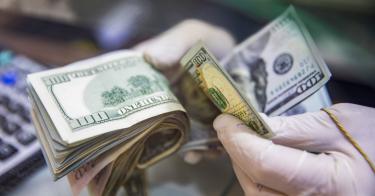The goal of the latest interest rate hike from the Federal Reserve? To avoid a deep recession “by acting with resolve now,” according to Fed Chairman Jerome Powell. But if history is any guide, this is a case of too little, too late.
A century ago, the Federal Reserve created billions of dollars for the government to spend on World War I, then led us into a recession in 1920 with steep interest rate hikes in its attempt to cool off the inflation that followed the war. This was the Fed’s first test of its ability to manipulate the economy at the expense of the average American, and it passed with flying colors.
Fast-forward almost exactly 100 years, and little has changed. Powell created trillions of dollars for the government to spend over the last two years, and now there is too much liquidity in the market, which has driven up prices and gotten the economy addicted to cheap credit.
His solution: stop the pecuniary printing presses, which will cause a recession in the short run. So, after transferring wealth from the people to the government via inflation in the boom, the Fed chairman is causing a bust in his attempt to bring prices back down. Look out, common man: Powell gets you coming and going.
To illustrate how laughably behind the curve Powell is on inflation, interest rates were already in double-digits when inflation was last this high, 40 years ago. Today, the key Fed interest rate is less than 3.25 percent. The time to start 100-basis-point hikes was long ago. Now they’re painfully overdue.
Powell should have taken his foot off the gas long ago and allowed the economy to advance under its own momentum. When it was time to tap the brakes, he kept his foot to the floor—but on the wrong pedal.
A gentle tapping of the brakes causes little disruption to passengers in the vehicle, but it is much too late for that now. As Powell belatedly recognizes that he is driving much too fast (at night with no headlights), he must now slam the brakes to regain control, and some passengers are going to be launched through the windshield in the process, à la stock index declines of 4 to 5 percent in a day.
To be clear, a hard and fast tightening of the money supply is still the correct decision. But this violent course change is only necessary because Powell went too far in the other direction.
Conversely, had the cancer of inflation been acknowledged when it was still in stage one, Powell could have used low doses of radiation and chemotherapy to kill it and done minimal collateral damage to the patient. Instead, he fed the tumor and is now attacking it in stage three. The heavier doses of treatment required this late in the game will save the patient but also cause considerable harm in the process.
Again, the proper prescription is not to just let the cancer grow because it is already advanced; that will kill the patient. The bitter medicine of tighter money is the best alternative available, but it was Powell’s monetary malpractice that put America in this seemingly no-win scenario.
>>> Media Elite Play Identity Politics While Americans Suffer From Fed’s Monetary Moves
Powell’s newfound hawkish tone on inflation, which stands in stark contrast to his “transitory” terminology, has some people drawing a parallel between Powell and the late predecessor Paul Volcker, but that is somewhat apples and oranges. Volcker took the helm when inflation was already in double digits and accelerating, then drove a stake through the heart of the beast. Conversely, Powell’s gobbling up of government bonds for two years created inflation nearly as bad as what faced Volcker.
In the 1980s, Volcker told the Treasury to sell its own bonds and refused to finance record-breaking deficits. Instead of following that example for the last three years, Powell repeated the monetary malfeasance in which the Fed engaged itself 100 years ago.
If Powell has the stomach to actually tackle inflation, he will only be cleaning up a mess he himself caused. His excessive money creation distorted price signals, and the economy is in for a violent realignment as he contracts the money supply. After fueling the boom, the Fed is now engineering a bust. Put more biblically, Powell giveth, Powell taketh away.
This piece originally appeared in The Sacramento Bee




